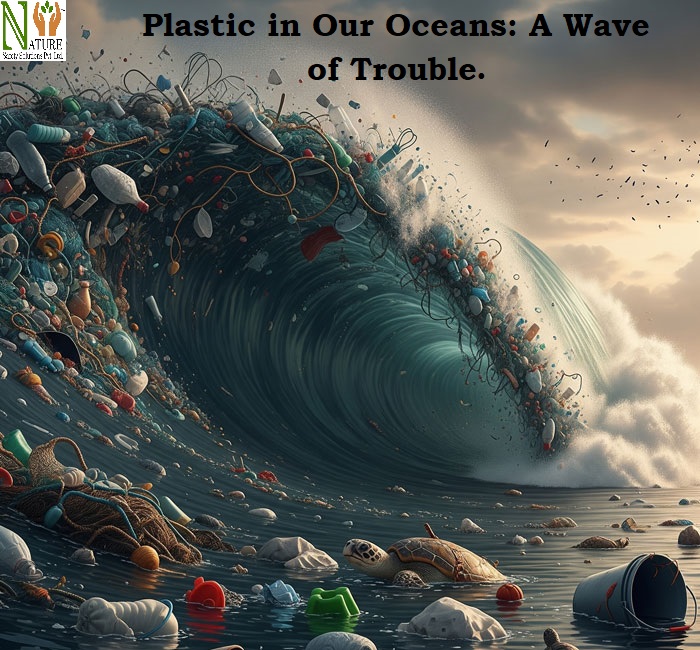Plastic is one of the most useful materials we’ve ever created. It’s strong, cheap, and long-lasting. But today, that same plastic is harming our oceans. Every year, large amounts of plastic waste end up in the sea, threatening marine animals and even human health. What began as a helpful invention has turned into a growing disaster for our planet.

How Plastic Reaches the Ocean
Most plastic in the ocean starts on land. Items like plastic bags, bottles, and food wrappers are often thrown away carelessly. Wind, rain, and rivers carry this trash to the sea. In places where waste is not managed properly, plastic piles up and easily flows into the ocean.
Fishing gear, such as nets and ropes, also adds to the problem. Lost or discarded equipment floats in the water and can harm marine life for years.
Why Ocean Plastic Is Dangerous
Once in the water, plastic becomes a long-term threat. It doesn’t disappear. Instead, it slowly breaks into smaller pieces called microplastics. These are difficult to remove and spread widely through the ocean.
Marine animals often mistake plastic for food. Turtles eat plastic bags thinking they are jellyfish. Birds feed bottle caps to their chicks. These mistakes can lead to injury, illness, or death. Over time, the plastic eaten by sea creatures travels up the food chain, reaching humans through seafood.
The Hidden Problem of Microplastics
Microplastics are tiny plastic particles that come from broken items or products like body scrubs and toothpaste. Though small, they cause big problems. These tiny bits of plastic float in the water, where they’re eaten by fish and other marine animals.
Scientists have even found microplastics in drinking water, salt, and the air. That means people are also exposed, though the full health effects are still being studied.
Plastic Pollution and People
Plastic in the ocean doesn’t just hurt animals—it affects people, too. Fishing communities suffer when fish populations drop due to pollution. Beaches covered in trash drive away tourists, hurting local businesses.
There are also health concerns. If we eat seafood that contains plastic, we may also be consuming harmful chemicals. These chemicals can affect the body over time, possibly leading to serious health issues.
What We Can Do
The problem of plastic in the ocean seems big, but there are things we can do to help. One of the easiest steps is to reduce the use of single-use plastics like straws, bags, and plastic bottles. Choosing reusable items can make a big difference.
Proper waste disposal is also key. When we recycle correctly and avoid littering, we prevent plastic from reaching the ocean in the first place.
Clean-up events help remove trash from rivers, beaches, and public spaces. Supporting eco-friendly companies and calling for stronger laws to limit plastic production can also bring lasting change.
Also read:-
